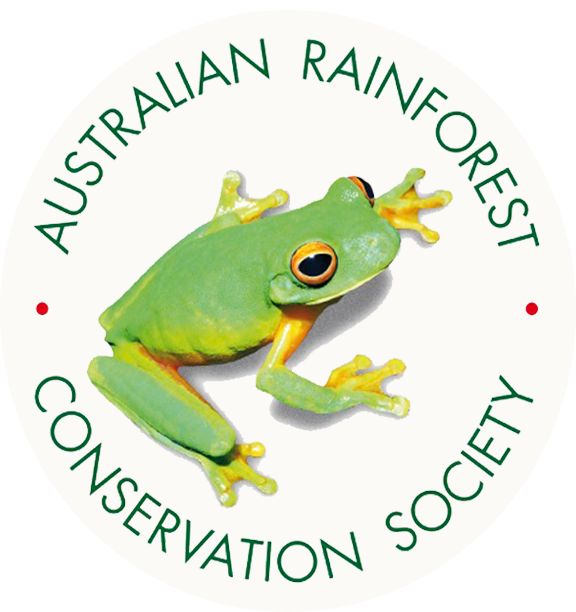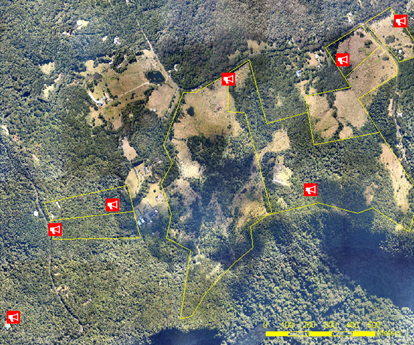 Springbrook Rescue
Springbrook Rescue
 Springbrook Rescue
Springbrook Rescue
| Home | The Vision | Springbrook — A Natural Wonder | The Springbrook Rescue Project | Support the Project | About ARCS |
|
The Science | ||||||||
| ||||||||
|
Science Projects
| ||||||||
|
ARCS Critical HabitatProject The restoration goal of the Springbrook Rescue project is to restore critical habitat and landscape connectivity especially in the most vulnerable and fragmented high country where a significant proportion of the Queensland government’s land purchases are located. This area is part of a nationally identified threatened hotspot of biodiversity and part of the Gondwana Rainforests of Australia World Heritage site. At the time the Gondwana Rainforests of Australia World Heritage area was listed in 1994, the existing National Park was too small, fragmented and poorly configured to retain its values in the long term. Critical habitat restoration in this region needs to give priority consideration to the resource, shelter, and reproductive needs of ancient lineages of plants and animals contributing to the Outstanding Universal Value of the World Heritage area, as well as to their sensitivity to habitat loss, modification and fragmentation. The high altitude zone contains the most serious bottlenecks to achieving critical habitat integrity and landscape connectivity, particularly in the Mundora, Ee-jung and Boy-ull Creek catchments. The Critical Habitat project attempts to answer the question “when do recovering landscapes become viable habitat for the selected indicator species?” The ability to demonstrate long-term reproductive success is considered an important step to answering this question. To this end, the Critical Habitat project involves video and audio recording over a range of sites to monitor the key indicator species and other fauna essential for ecological integrity. Since water is an essential resource particularly for avifauna, our audio-visual monitoring locations are associated either with artificial or natural sources of water. The results of audio-visual monitoring are being correlated with data from the sensors in the Wireless Sensor Network which continuously monitor environmental conditions (Projects SRC1 and SRC2). Video monitoring The video monitoring project currently involves four day/night cameras located at artificial watering sites surrounded by regenerating rainforest of known history. Recording is triggered by motion, for example, by a bird arriving for a bath or a drink. Analysis of the recordings indicates the potential to provide data on breeding activity (success) and therefore habitat quality especially for selected indicator species. Key indicator bird species include the essentially ground-dwelling insectivores or invertebrativores such as the Albert’s Lyrebird, Australian Logrunner, Bassian Thrush, and Russet-tailed Thrush. In addition the Yellow-throated Scrubwren is of great interest because of reported declines in other parts of its range. Key indicator frog species include Kyarranus loveridgei and Assa darlingtoni. The Australian Logrunner is a particularly apt indicator species because of its strong dependence on low light environments of more advanced regeneration or mature forests. Results since recording began in February 2007 indicate the assumption underlying the project design is valid with reproductive success capable of being quantified. Logrunner individuals (and those of some other species) have distinctive, reproducibly identifiable markings so that their individual longevity, territoriality, and reproductive productivity can be measured over the long term as can their degree of dependence on water as a critical habitat requirement. Some of the results of recordings may be of interest to the general public as well. | ||||||||
In this video (right), a male Logrunner (right-hand edge of picture) shares a bath with an Eastern Yellow Robin. After the robin leaves, a female Logrunner (females, with their orange breast, are more colourful than males) joins the male briefly. Then the male gets on with his bath which he will have at least once a day. |
|
Audio monitoring As of November 2012, we have seven audio recorders (Song Meter SM2, Wildlife Acoustics Inc.) located around the high country at Springbrook. They record for seven hours each day and the data are downloaded at monthly intervals. There are two additional Song Meters on the ARCS property, Ankida, towards the northern end of the Plateau. Below are some samples from the recorders together with sonograms produced from the recorded data using specialist software (Songscope, Wildlife Acoustics Inc.). |
 |
 |
Mix |
 |
Albert's Lyrebird |
 |
Australian Logrunner |
 The right-hand sonogram shows the male calling (whip crack) with no female responding |
Eastern Whipbird |
 |
Golden Whistler |
 The right-hand sonogram shows the male calling (whip crack) with no female responding |
Eastern Whipbird |
 The right-hand sonogram shows the male calling (whip crack) with no female responding |
Eastern Whipbird |